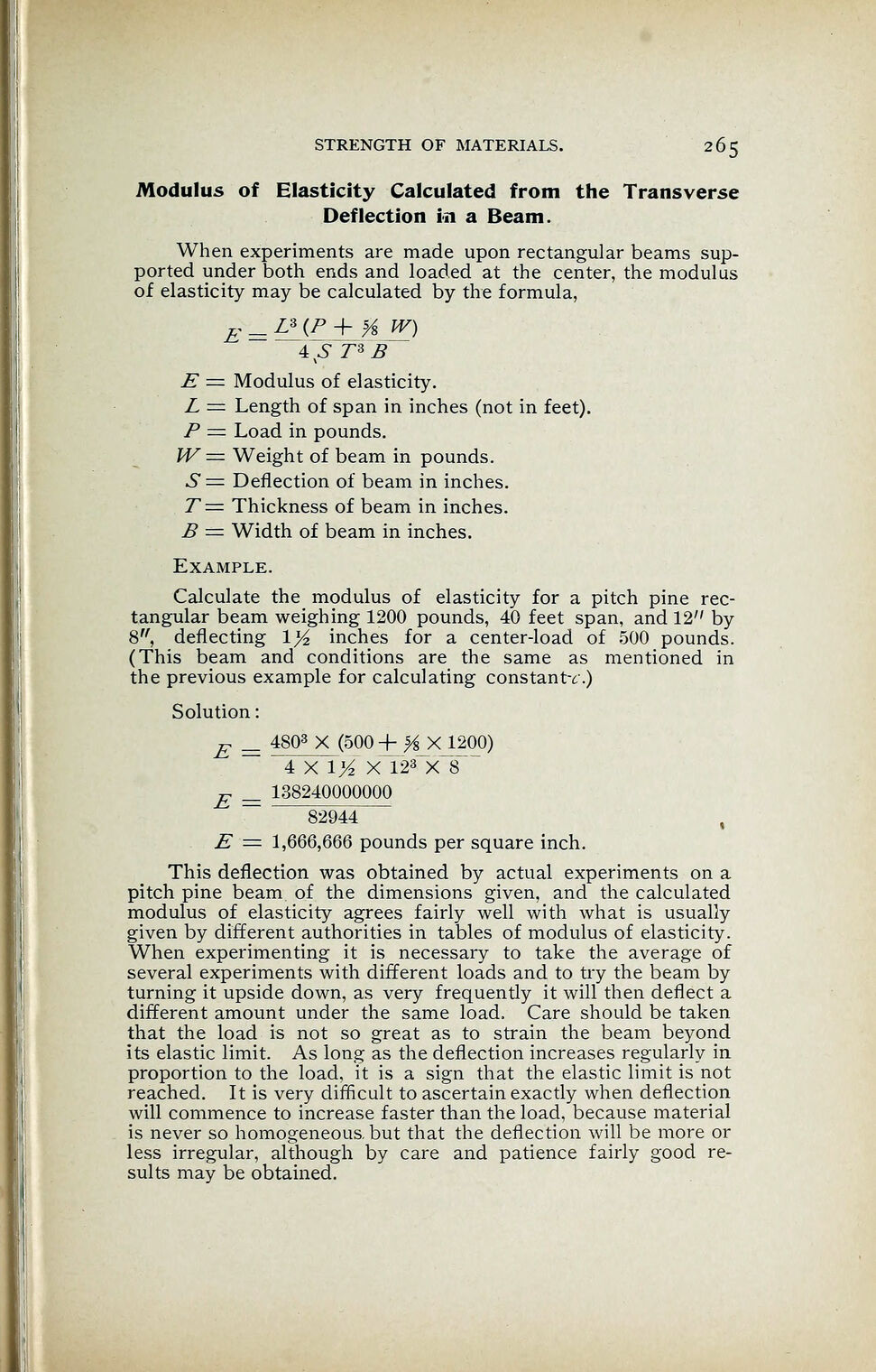
Full resolution (JPEG) - On this page / på denna sida - Strength of Materials - Modulus of elasticity calculated from the transverse deflection in a beam

<< prev. page << föreg. sida << >> nästa sida >> next page >>
Below is the raw OCR text
from the above scanned image.
Do you see an error? Proofread the page now!
Här nedan syns maskintolkade texten från faksimilbilden ovan.
Ser du något fel? Korrekturläs sidan nu!
This page has never been proofread. / Denna sida har aldrig korrekturlästs.
STRENGTH OF MATERIALS. 265
Modulus of Elasticity Calculated from the Transverse
Deflection in a Beam.
When experiments are made upon rectangular beams sup-
ported under both ends and loaded at the center, the modulus
of elasticity may be calculated by the formula,
E = IHP±HJV)
E = Modulus of elasticity.
L = Length of span in inches (not in feet).
P = Load in pounds.
W’== Weight of beam in pounds.
S= Deflection of beam in inches.
T= Thickness of beam in inches.
B = Width of beam in inches.
Example.
Calculate the modulus of elasticity for a pitch pine rec-
tangular beam weighing 1200 pounds, 40 feet span, and 12" by
8", deflecting \y
2 inches for a center-load of 500 pounds.
(This beam and conditions are the same as mentioned in
the previous example for calculating constants.)
Solution
:
E = 48°3
x (500 ± #_X_1200)
4 X l l
A X 123
X 8
E _ 138240000000
82944 %
E = 1,666,666 pounds per square inch.
This deflection was obtained by actual experiments on a
pitch pine beam of the dimensions given, and the calculated
modulus of elasticity agrees fairly well with what is usually
given by different authorities in tables of modulus of elasticity.
When experimenting it is necessary to take the average of
several experiments with different loads and to try the beam by
turning it upside down, as very frequently it will then deflect a
different amount under the same load. Care should be taken
that the load is not so great as to strain the beam beyond
its elastic limit. As long as the deflection increases regularly in
proportion to the load, it is a sign that the elastic limit is not
reached. It is very difficult to ascertain exactly when deflection
will commence to increase faster than the load, because material
is never so homogeneous, but that the deflection will be more or
less irregular, although by care and patience fairly good re-
sults may be obtained.
<< prev. page << föreg. sida << >> nästa sida >> next page >>